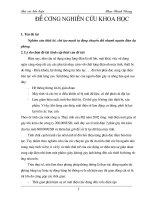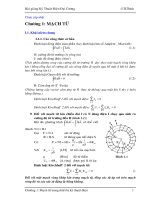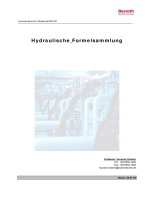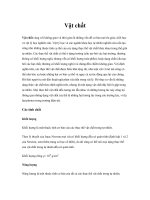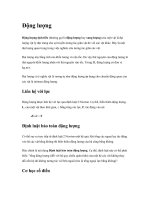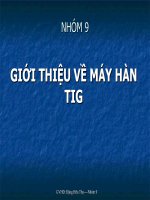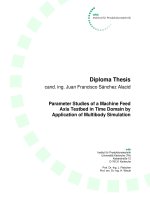Tài liệu SEC 07 docx
Bạn đang xem bản rút gọn của tài liệu. Xem và tải ngay bản đầy đủ của tài liệu tại đây (40.49 KB, 4 trang )
VII
InverseProblemsand
SignalReconstruction
RichardJ.Mammone
RutgersUniversity
25SignalRecoveryfromPartialInformation ChristinePodilchuk
Introduction
•
FormulationoftheSignalRecoveryProblem
•
LeastSquaresSolutions
•
Signal
RecoveryusingProjectionontoConvexSets(POCS)
•
Row-BasedMethods
•
Block-BasedMethods
•
ImageRestorationUsingPOCS
26AlgorithmsforComputedTomography GaborT.Herman
Introduction
•
TheReconstructionProblem
•
TransformMethods
•
FilteredBackprojection(FBP)
•
TheLinogramMethod
•
SeriesExpansionMethods
•
AlgebraicReconstructionTechniques(ART)
•
ExpectationMaximization(EM)
•
ComparisonofthePerformanceofAlgorithms
27RobustSpeechProcessingasanInverseProblem RichardJ.MammoneandXiaoyu
Zhang
Introduction
•
SpeechProductionandSpectrum-RelatedParameterization
•
Template-Based
SpeechProcessing
•
RobustSpeechProcessing
•
AffineTransform
•
TransformationofPredic-
torCoefficients
•
AffineTransformofCepstralCoefficients
•
ParametersofAffineTransform
•
CorrespondenceofCepstralVectors
28InverseProblems,StatisticalMechanicsandSimulatedAnnealing K.Venkatesh
Prasad
Background
•
InverseProblemsinDSP
•
AnalogieswithStatisticalMechanics
•
TheSimulated
AnnealingProcedure
29ImageRecoveryUsingtheEMAlgorithm JunZhangandAggelosK.Katsaggelos
Introduction
•
TheEMAlgorithm
•
SomeFundamentalProblems
•
Applications
•
Experimental
Results
•
SummaryandConclusion
30InverseProblemsinArrayProcessing KevinR.Farrell
Introduction
•
BackgroundTheory
•
NarrowbandArrays
•
BroadbandArrays
•
InverseFormula-
tionsforArrayProcessing
•
SimulationResults
•
Summary
31ChannelEqualizationasaRegularizedInverseProblem JohnF.Doherty
Introduction
•
Discrete-TimeIntersymbolInterferenceChannelModel
•
ChannelEqualization
Filtering
•
Regularization
•
Discrete-TimeAdaptiveFiltering
•
NumericalResults
•
Conclusion
32InverseProblemsinMicrophoneArrays A.C.Surendran
Introduction:DereverberationUsingMicrophoneArrays
•
SimpleDelay-and-SumBeamformers
•
MatchedFiltering
•
DiophantineInverseFilteringUsingtheMultipleInput-Output(MINT)
Model
•
Results
•
Summary
c
1999byCRCPressLLC
33SyntheticApertureRadarAlgorithms ClayStewartandVicLarson
Introduction
•
ImageFormation
•
SARImageEnhancement
•
AutomaticObjectDetectionand
ClassificationinSARImagery
34IterativeImageRestorationAlgorithms AggelosK.Katsaggelos
Introduction
•
IterativeRecoveryAlgorithms
•
SpatiallyInvariantDegradation
•
Matrix-Vector
Formulation
•
Matrix-VectorandDiscreteFrequencyRepresentations
•
Convergence
•
Useof
Constraints
•
ClassofHigherOrderIterativeAlgorithms
•
OtherFormsof(x)
•
Discussion
T
HEREAREMANYSITUATIONSwhereadesiredsignalcannotbemeasureddirectly.The
measurementmightbedegradedbyphysicallimitationsofthesignalsourceand/orbythe
measurementdeviceitself.Theacquiredsignalisthusatransformationofthedesiredsignal.
Theinversionofsuchtransformationsisthesubjectofthepresentchapter.Inthefollowingsections
wewillreviewseveralinverseproblemsandvariousmethodsofimplementationoftheinversionor
recoveryprocess.Themethodsdifferintheabilitytodealwiththespecificlimitationspresentineach
application.Forexample,theaprioriconstraintofnon-negativityisimportantforimagerecovery,
butnotsoforadaptivearrayprocessing.Thegoalofthefollowingsectionsistopresentthebasic
approachesofinversionandsignalrecovery.Eachsectionfocusesonaparticularapplicationarea
anddescribestheappropriatemethodsforthatarea.
Thefirstchapter,25,isentitled“SignalRecoveryfromPartialInformation”byChristinePodilchuk.
Thissectionreviewsthebasicproblemofsignalrecovery.Theideaofprojectionontoconvexsets
(POCs)isintroducedasanelegantsolutiontothesignalrecoveryproblem.Theinclusionoflinear
andnon-linearconstraintsareaddressed.ThePOCsmethodisshowntobeasubsetoftheset
theoreticapproachtosignalestimation.Theapplicationofimageofrestorationisdescribedin
detail.
Chapter26isentitled“AlgorithmsforComputedTomography”byGaborT.Herman.Thissection
presentsmethodstoreconstructtheinteriorsofobjectsfromdatacollectedbasedontransmittedor
emittedradiation.Theproblemoccursinawiderangeofapplicationareas.Thecomputeralgorithms
usedforachievingthereconstructionsarediscussed.Thebasictechniquesofimagereconstruction
fromprojectionsareclassifiedinto“TransformMethods”(includingFilteredBackprojectionandthe
LinogramMethods)and“SeriesExpansionMethods”(including,inparticular,theAlgebraicRecon-
structionTechniquesandthemethodofExpectationMaximization).Inaddition,aperformance
comparisonofthevariousalgorithmsforcomputedtomographyisgiven.
Chapter27isentitled“RobustSpeechProcessingasanInverseProblem”byRichardJ.Mammone
andXiaoyuZhang.Theperformanceofspeechandspeakerrecognitionsystemsissignificantly
affectedbytheacousticenvironment.Thebackgroundnoiselevel,thefilteringeffectsintroducedby
themicrophoneandthecommunicationchanneldramaticallyaffecttheperformanceofrecognition
systems.Itisthereforecriticalthatthesespeechrecognitionsystemsbecapableofdetectingthe
ambientacousticenvironmentcontinueandinversetheireffectsfromthespeechsignal.Thisis
theinverseprobleminrobustspeechprocessingthatwillbeaddressedinthissection.Ageneral
approachtosolvingthisinverseproblemispresentedbasedonanaffinetransformmodelinthe
cepstrumdomain.
Chapter28isentitled“InverseProblems,StatisticalMechanicsandSimulatedAnnealing”byK.
VenkateshPrasad.Inthissection,acomputationalapproachto3-Dcoordinaterestorationispre-
sented.Theproblemistoobtainhigh-resolutioncoordinatesof3-Dvolume-elements(voxels)from
observationsoftheircorresponding2-Dpicture-elements(pixels).Theproblemisposedasacom-
binatorialoptimizationproblemandborrowingfromourunderstandingofstatisticalmechanics,
weshowhowtoadaptthetoolofsimulatedannealingtosolvethisproblem.Thismethodishighly
amenabletoparallelanddistributedprocessing.
Chapter29isentitled“ImageRecoveryUsingtheEMAlgorithm”byJunZhangandAggelosK.
c
1999byCRCPressLLC
Katsaggelos. Inthissection, theimagerecovery/reconstruction problemisformulatedasamaximum-
likelihood (ML) problem in which the image is recovered by maximizing an appropriately defined
likelihood function. These likelihood functions are often highly non-linear and when some of the
variables involved are not directly observable, they can only be specified in integral form (i.e., aver-
aging over the “hidden variables”). The EM (expectation-maximization) algorithm is revised and
applied to some typical image recovery problems. Examples include image restoration using the
Markov random field model and single and multiple channel image restoration with blur identifica-
tion.
Chapter 30 is entitled “InverseProblems In Array Processing” by Kevin R. Farrell. Array processing
uses multiple sensors to improve signal reception by reducing the effects of interfering signals that
originate from different spatial locations. Array processing algorithms are generally implemented
via narrowband and broadband arrays, both of which are discussed in this chapter. Two classical
approaches, namely sidelobe canceler and Frost beam formers, are reviewed. These algorithms are
formulated as an inverse problem and an iterative approach for solving the resulting inverse problem
is provided.
Chapter 31 is entitled “Channel Equalization as a RegularizedInverse Problem” by JohnF. Doherty.
In this section, the relationship between communication channel equalization and the inversion of
a linear system of equations is examined. A regularized method of inversion is an inversion process
in which the noise dominated modes of the restored signal are attenuated. Channel equalization is
the process that reduces the effects of a band-limited channel at the receiver of a communication
system. A regularized method of channel equalization is presented in this section. Although there
are many ways to accomplish this, the method presented uses linear and adaptive filters, which makes
the transition to matrix inversion possible.
Chapter 32 is entitled “Inverse Problems in Microphone Arrays” by A.C. Surendran. The response
of an acoustic enclosure is, in general, a non-minimum phase function and hence not invertible. In
this section, we discuss techniques using microphone arrays that attempt to recover speech signals
degraded by the filtering effect of acoustic enclosures by either approximately or exactly “inverting”
the room response. The aim of such systems is to force the impulse response of the overall system,
after de-reverberation, to be an impulse function. Beamforming and matched-filtering techniques
(that approximate this ideal case) and the Diophantine inverse filtering method (a technique that
provides an exact inverse) are discussed in detail.
Chapter 33 is entitled “Synthetic Aperture Radar Algorithms” by Clay Stewart and Vic Larson.
A synthetic aperture radar (SAR) is a radar sensor that provides azimuth resolution superior to
that achievable with its real beam by synthesizing a long aperture by platform motion. This section
presents an overview of the basics of SAR phenomenology and the associated algorithms that are used
to form the radar image and to enhance it. The section begins with an overview of SAR applications,
historical development, fundamental phenomenology, and a survey of modern SAR systems. It also
presents examples of SAR imagery. This is followed by a discussion of the basic principles of SAR
image formation that begins with side looking radar, progresses to unfocused SAR, and finishes with
focused SAR.A discussion ofSAR image enhancement techniques, such as thepolarimetric whitening
filters, follows. Finally, a brief discussion of automatic target detection and classification techniques
is offered.
Chapter 34 is entitled “Iterative Image Restoration Algorithms” by Aggelos K. Katsaggelos. In this
section, a class of iterative restoration algorithms is presented. Such algorithms provide solutions
to the problem of recovering an original signal or image from a noisy and blurred observation of it.
This situation is encountered in a number of important applications, ranging from the restoration
c
1999 by CRC Press LLC
of images obtained by the Hubble space telescope, to the restoration of compressed images. The
successive approximation methods form the basis of the material presented in this section.
The sample of applications and methods described in this chapter are meant to be representative
of the large volume of work performed in this field. There is no claim of completeness, any omissions
of significant contributors or other errors are solely the responsibility of the section editor, and all
praiseworthy contributions are due solely to the chapter authors.
c
1999 by CRC Press LLC

